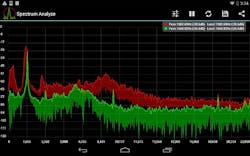Officials of the Air Force Research Laboratory Information Directorate in Rome, N.Y., released a broad agency announcement on Tuesday (BAA AFRL-RIK-2015-0022) for the Advanced Cyber, SIGINT, and Personal Communications Collection and Exploitation program.
The project focuses on command, control, communications, cyber, and intelligence (C4I) with focus on intelligence and cyber.
Air Force researchers are asking industry and academia to submit whiter papers with ideas on advanced cyber security and SIGINT communications collection techniques, as well as on systems that perform these operations on multi-agency systems with open architectures and scalable technologies.
The solicitation has two thrusts. First, the Air Force wants techniques and algorithms that identify, collect, process, exploit, and manipulate electronic communication signals in a moderate to dense co-channel environment with potentially significant Doppler effects.
Specifically, the Air Force wants to find ways to detect, identify, characterize, and geolocate emerging communications and low-power signals; write advanced digital signal processing (DSP) software for new and existing systems and waveforms; software and hardware for standoff collection systems; integrating these capabilities into information-collection systems; and characterizing cognitive, software-defined radios from the air or the ground in dense signal environments.
Second, the Air Force wants to capitalize on existing DSP and cyber technologies to extract the most intelligence information possible from intercepted communications signals. Automated signal processing will be a key component.
The Air Force has nearly $25 million to spend on this project over the next three years, and typical two-year contracts will range from $250,000 to $1.5 million. For now the Air Force wants white papers, not formal proposals.
Related: Embedded computers with fast D/A converters for SIGINT and EW offered by Curtiss-Wright
Companies interested should email white papers no later than 29 Jan. 2016 to the Air Force's Douglas Smith at [email protected]. Companies also may email white papers by 30 Jan. 2017 and by 30 Jan. 2018. The Air Force will accept white papers sent no later than 28 Sept. 2018. Those who submit white papers with promising ideas may be invited to submit formal proposals.
Email technical questions to Douglas Smith at [email protected], and contracting questions to Gail Marsh at [email protected].
More information is online at https://www.fbo.gov/spg/USAF/AFMC/AFRLRRS/BAA-AFRL-RIK-2015-0022/listing.html.



